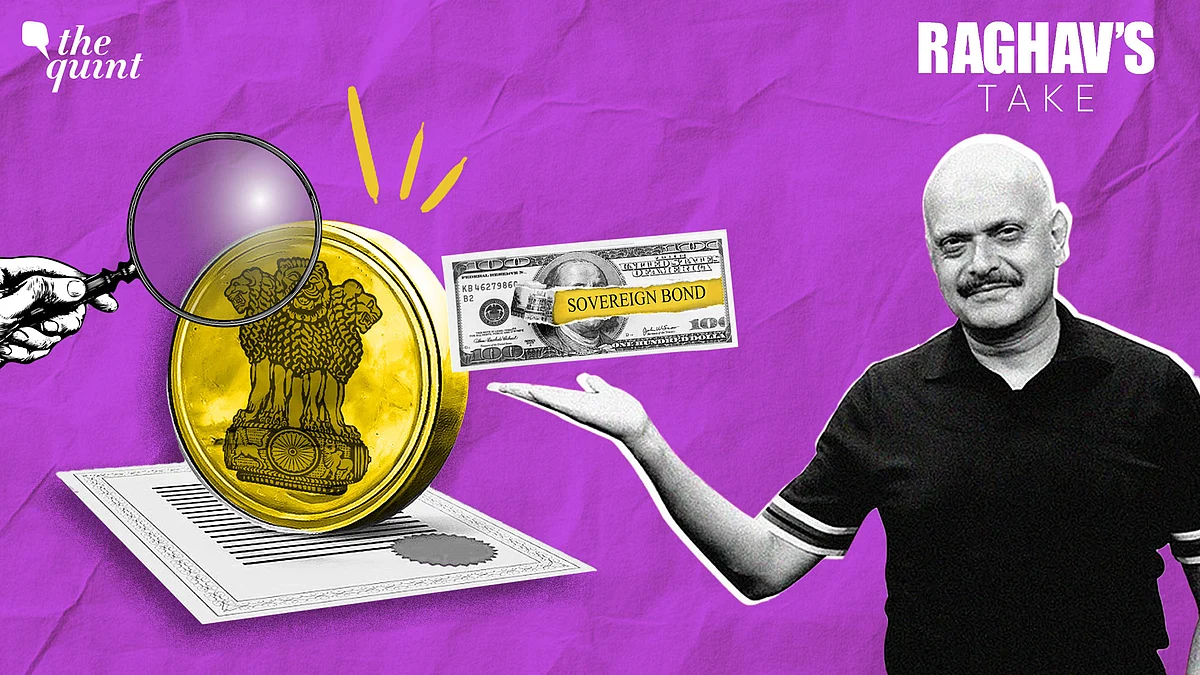Trump’s Mar-a-Lago Accord Revives India’s Dollar Bond—Let it Fly Now!
President Trump has given us a second chance to succeed with our sovereign dollar bonds, writes Raghav Bahl.

advertisement
July 2019, in America: US President Donald Trump, in his first term, let fly a tweet at China, Europe, and the dollar:
“China and Europe playing big currency manipulation game and pumping money into their system in order to compete with USA. We should MATCH, or continue being the dummies who sit back and politely watch as other countries continue to play their games… we should have the lower interest rates, and we should have a dollar that’s not so strong. Because our dollar is killing us.”
July 2019, in India: It’s unlikely that Finance Minister Nirmala Sitharaman, presenting her first budget of Modi 2.0, had predicated her proposals on Trump’s dollar devaluation prompt. But she did announce a bold measure which made terrific sense given the falling dollar and lower interest rates in America—a $10 billion sovereign Indian bond, the first ever!
I had greeted the FM’s announcement with these words of joy:
One of the early bouncers she faced was hooked for six, when she announced that India would sell $10 billion of sovereign bonds in overseas markets. Whack! In one stroke, she moved the foreign currency risk on to her fiscal accounts, spread joy in domestic bond markets, and heralded lower local interest rates. I was thrilled that she was taking an entrepreneurial risk, especially since our foreign debt to GDP ratio is at an unnecessarily safe 3.8 percent. Of course, her ministry will now have to develop sophisticated foreign risk management skills to hedge the dollar and launch nimble treasury operations in international currency markets. Be that as it may. At least she showed a bit of swag.
A Galaxy Conspired to Kill a Dream
But I had celebrated in haste. I was caught unawares by the irrational fears of India’s economic nationalists. Why were people worried? It was a mere tenth of government’s gross borrowings and less than three percent of foreign exchange reserves. But in less than a week, a relatively tiny $10 billion bond had become a national trauma. The naysayers’ camp was brimming with contradictory ideologies:
Ashwani Mahajan (RSS): “Anti-patriotic act…allowing rich nations to dictate the country’s policies.”
Yashwant Sinha (ex-BJP FM): “Fraught enterprise in the current climate of a global trade war.”
Raghuram Rajan (ex-RBI Governor): “Faddish investors buying when India is hot, dumping us when not.”
C Rangarajan (ex-RBI Governor): “Risky.”
Rathin Roy (PM Modi’s economic advisor): “Serious issues regarding loss of sovereignty.”
I was left rubbing my eyes in disbelief. Uber free-market-liberals, committed centrists, and ultra-right-wing-insular-conservatives had aligned their irreconcilable convictions to trash sovereign bonds.
From Mar-a-Lago to Raisina Hill, Let’s Revive the Bond
But six years later, it’s a new, stronger India. And a belligerently energised President Trump in an unexpected second term, with a much larger mandate. This time he is going bananas about tariffs, threatening to take them to three figures against China, and high double figures against India.
Instead of a random strategy strung together on tweets (as in 2018/2019), he’s given it a strategic framework in 2025, called the Mar-a-Lago Accord.
It’s an audacious menu of policy interventions: forcing dollar depreciation, imposing broad and deep tariffs, taxing capital inflows and outflows, rebuilding America’s rust belt with new manufacturing investments, and getting jobs back to factories.
Isn’t it a heaven-sent, or perhaps Trump-sent opportunity for India to bring back the dollar bond? Because if the dollar stays weak, almost every perceived fear of the naysayers will evaporate.
So, Let’s Examine Each Objection One-by-One
Objection: Volatile dollar/rupee rates will create “unquantifiable” costs in the long term.
Counter: Wrong! By always hedging against future dollar rates and paying a much lower premium because of an expectedly weak dollar, our costs will forever be controlled and quantifiable. While it’s true that hedging costs may often push the total interest rate a few basis points higher than what the government could borrow at in local markets, we should remember that these higher costs get compensated by the several positives that accrue on venturing overseas, including the fact that private borrowers get more cash in domestic bond markets.
Objection: Why go overseas when you can ask foreign portfolio investors (FPIs) to lend more in the domestic market, ie sell them more rupee bonds?
Counter: This one is utterly specious, if not an outright falsehood. Because when you float a sovereign bond overseas, you access an entirely new category of lenders, over and above FPIs that are authorised to invest in India.
Objection: India could stare at an international default in frightful, flightful times
Counter: India gets an annuity of nearly $120 bn from its hard-working sons and daughters living overseas who willingly repatriate to their loved ones left behind. Our forex reserves are touching $700 billion, nearly 70 times the $10 billion issuance. If we can’t have the stomach for this much risk, let’s just quit (or take voluntary retirement).
Objection: The only advantage of sovereign bonds is lower interest rates; why not just ask the RBI to reduce the repo?
Counter: This is rubbish. If a regulatory fiat could completely control/tame market variables, then why even bother with economic policies? The government should just say “Siri, create jobs, increase manufacturing to 25 percent of GDP, double farmers’ income by 2026, and reopen closed small car showrooms”, and ping, it’s all done!
So, my fellow Indians—and of course, dear nationalists—President Trump has given us a second chance to succeed with our sovereign dollar bonds. Let’s just grab with both hands.